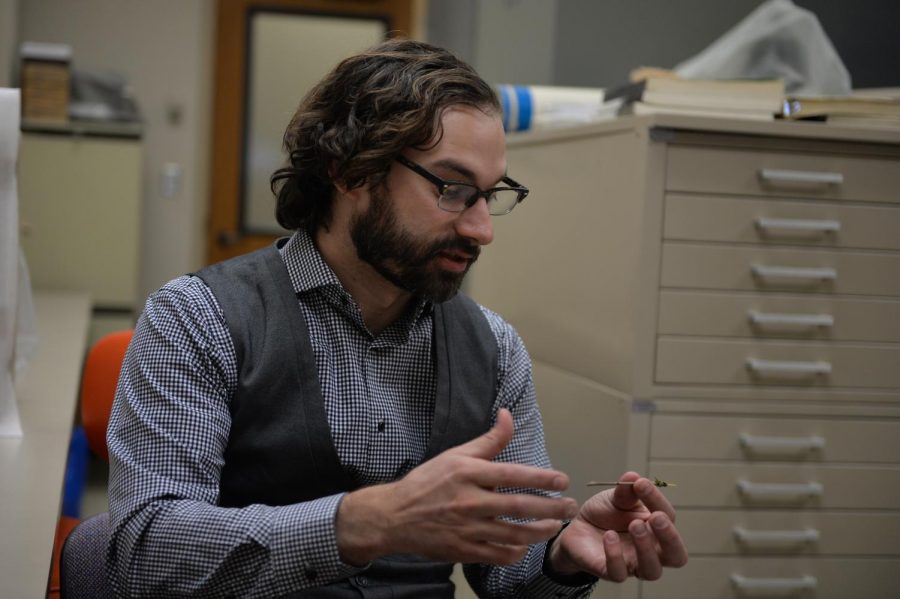WSU graduate student discovers 2,000-year-old artifact
Anthropologists create replica of tattooing tool to confirm its legitimacy
JACQUI THOMASSON | THE DAILY EVERGREEN
Anthropology Ph.D. candidate Andrew Gillreath-Brown discusses how he came across the tattooing tool, originally excavated in 1972, during the process of taking inventory.
March 7, 2019
A WSU anthropologist uncovered the oldest known tattooing tool in western North America.
Andrew D. Gillreath-Brown, WSU anthropology Ph.D. candidate, said the 2,000-year-old tattoo tool artifact is made from skunkbush sumac twig with yucca leaf strips that hold two prickly pear spines. The tool came from the archaeology site Turkey Pen in southeastern Utah.
Gillreath-Brown said he and a graduate student discovered the artifact when they were working at a museum during the summer of 2017.
The collections came from northern Arizona and were excavated back in 1972. They were curated in the late 1970’s, Gillreath-Brown said.
“I was going through 64 museum material boxes and ran across the artifact,” he said. “I took it out of the bag with gloves and noticed the black staining on the tips.”
Aaron Deter-Wolf, prehistoric archaeologist of Tennessee Division of Archaeology, said him and Brown planned to prove their finding was a tattoo implement, rather than prove it had been used for weaving baskets or drawing.
Gillreath-Brown said he made about eight tattoo tool artifact replicas, and four of them were used on pig skin because it is like human skin.
He said the four artifact replicas were used to do general tattooing and they worked well with simple black lines on the pig skin.
“I looked at those [black lines] through a high-resolution microscope,” Gillreath-Brown said, “to be able to compare to the actual artifact.”
Deter-Wolf said it was clear the artifact was a legitimate tattoo tool. Certain logical footprint tattooing in the southeastern U.S. is not well-established or understood.
There is evidence that many indigenous groups around southwestern North America, namely California, tattooed with cactus spines. However, Deter-Wolf said scholars have speculated about the evidence that substantiates the early tattooing in the southwest.
Deter-Wolf said rock art, ceramic effigies and potteries showed lines, geometric or dotted designs on the individuals, but is debated if it represents tattooing or body art.
“You can tattoo with any sharp object like a thorn, bone, sharp rock. But how would we demonstrate this specific thing is actually a tattoo tool?” Gillreath-Brown said.
The tattoo tool artifact will continue to be curated, he said. It really depends whether the Bureau of Land Management in Utah wants to do a museum exhibit, or do a digital exhibit that would be widely available to the public.









